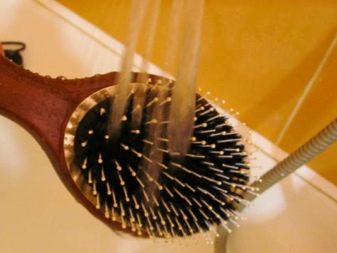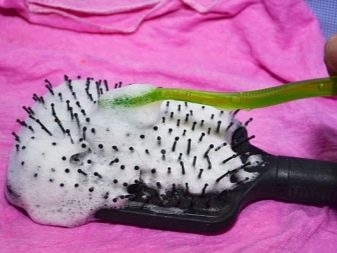Types of combs
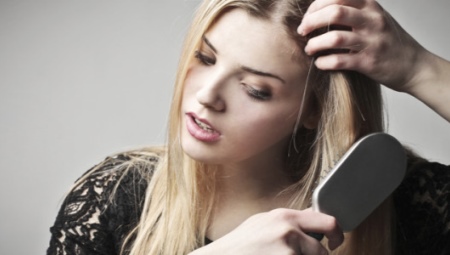
The life of a modern person is impossible without a comb that accompanies him in his daily activities, travel, business trips, and going to events. This simple-looking piece helps hair look well-groomed and creates hairstyles that resemble works of art.
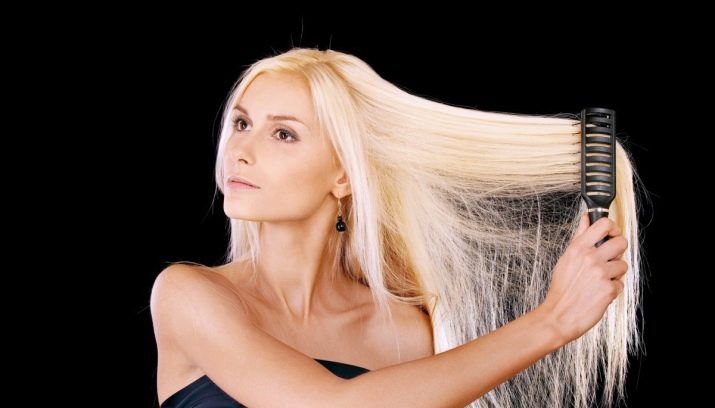
Types and application
Despite the large number of combs on display cases, they can be conditionally divided into four categories in terms of shape and size, as well as purpose:
- The traditional and most popular comb-brush is called "bombing" or, more commonly, "massage". Its shape can be different, but most often it is a rectangular or oval base for teeth on a soft pillow and a long handle. This type is universal, as it is suitable for any structure, thickness and length of hair. The brush is intended not only for combing and untangling, but also for massaging the head, which has a positive effect on blood circulation and the distribution of sebum along the entire length.
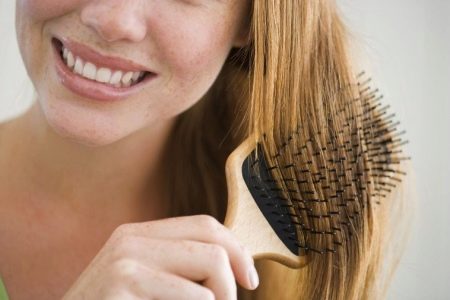
Due to the peculiarity of the effect, the hair acquires shine.
- The mini massage comb is the popular Tangle teezer that does not have a handle. Due to its small size and the ability to close the cloves, such a thing becomes convenient to carry in a bag. This type also includes looped combs for hair extensions. They are distinguished by the presence of loops that allow the cloves not to cling to the capsules and easily slide along the strands.
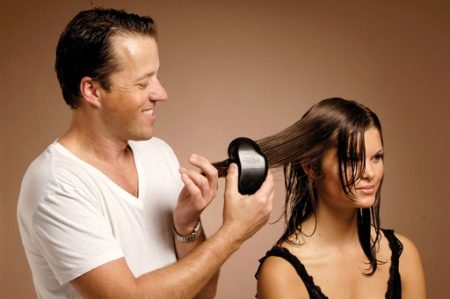
- Folding combs are practical and easy to store even in small bags. They transform from a small folded structure into a full-fledged product or a brush with a mirror.

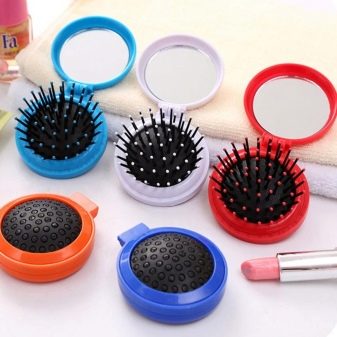
- Flat brushes are intended mainly for combing curls and smoothing them, but not creating styling.They do a good job of detangling without harming the hair.
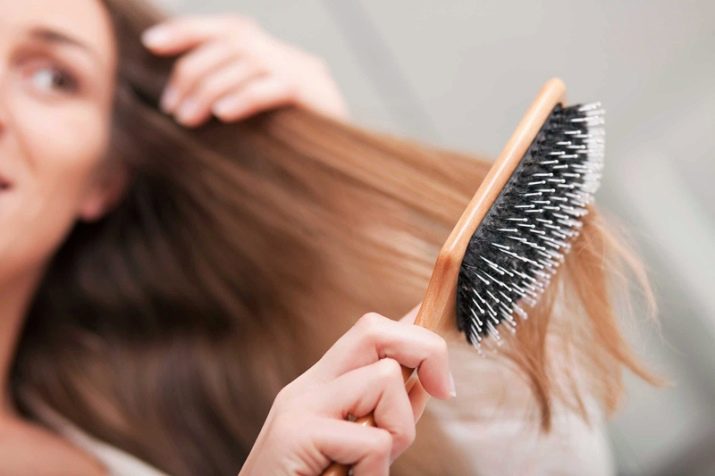
- A recent addition to the beauty world is the Microfiber Drying Comb. She not only massages the head with teeth, but also draws out moisture using the fabric part. For further drying of the comb, there are special holes on it.

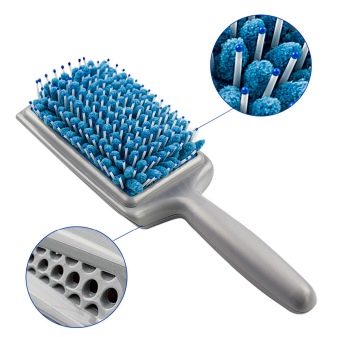
- A skeletal, blow-through or tunnel comb is popular. Her teeth are widely spaced, and the presence of slots in the base allows you to create circulation of hot air when styling with a hairdryer. With this comb, you can easily style short to medium length hair, while giving it volume at the roots.

- Another type of combs is round brushing. Thanks to the materials from which they are made, the entire brush heats up well, which allows you to style with volume at the roots, straight curls. Since this model creates curled ends, it is often called a curler comb. Brashing, along with tunnel combs, are popular professional hairstyles.

- An eternal subspecies of combs are combs that have been in use for centuries. They are best suited for short hair and are indispensable for haircuts, as their simple design allows you to tightly grip the curls.

Combs on long handles help to easily separate strands from each other and create a parting.
This comb can have a different frequency of teeth. The denser they are to each other, the more convenient the comb is for creating a fleece. Another advantage of this model is that it allows you to comb out strands of strands when creating ponytails.
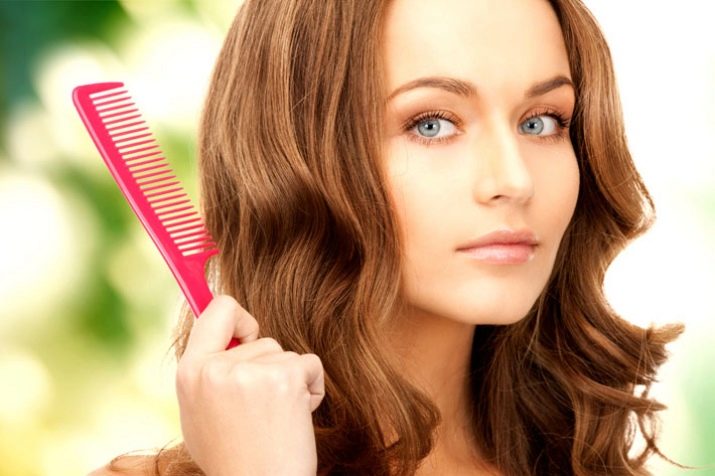
- A ponytail comb is a comb with a long thin handle. It is suitable for eliminating irregularities, dividing into thin strands, weaving, styling.
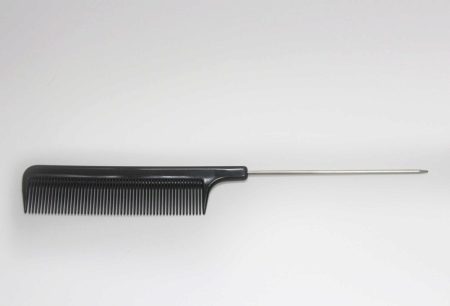
There are combination combs that include the characteristics of several types. For example, a massage comb is common to create bouffants. This comb has a thin design and soft natural bristles. Another combined model is a ridge, which has frequent teeth on one half and sparse teeth on the other.

Thinning combs also belong to the combined models. They are a simplified professional shaver for thinning hair.
Material classification
There are many materials used to make combs. So, there are plastic, wood, rubber, ebonite, metal and ceramic.
Each of them has its own specific characteristics, advantages, and sometimes disadvantages:
- Metal combs, such as aluminum, are not recommended for use by non-professionals, as if handled incorrectly, they can harm the scalp with their rigidity. This material heats up quickly when exposed to a hairdryer, which makes it uncomfortable to use and can damage the hair. Metal is most often used in separate parts, for example, in the form of ponytails, since it separates strands well.
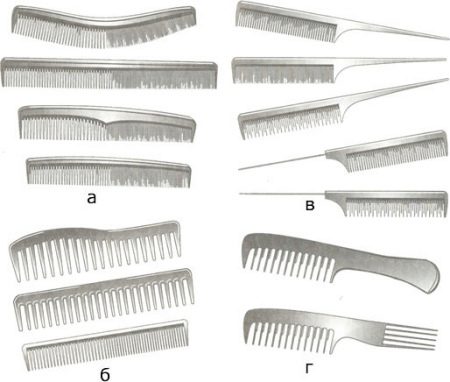
- Wooden combs are made from ash, cherry, beech, oak, pine, peach, and bamboo, sandalwood, juniper, and birch are especially popular. Besides the fact that it is a natural, tasty-smelling material, wood is not electrified. Over time, cracks appear on the teeth, especially if they have a loose texture, like pine. Such a defect damages the hair structure and can pull them out.


To prolong the life of the combs, do not wet them and store them near heaters.
- Plastic combs are the most popular and widespread. They are inexpensive, durable and resistant to temperature shocks. Plastic copes well with the main function - combing, but sometimes it strongly electrifies the hair.
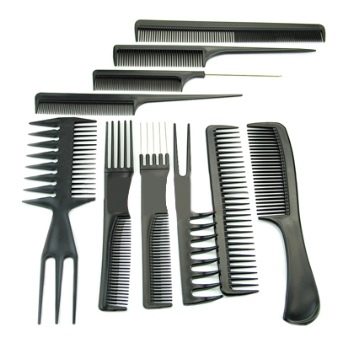

- Rubber, rubber and silicone combs are common. They are used for combing wet hair, do not injure them and the scalp, and do not electrify.Carbon and ceramic products glide easily through hair, separate strands and are not exposed to chemicals, therefore they are most often used by professionals in salons.
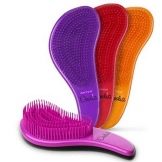
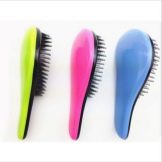
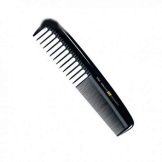
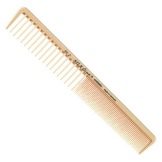
- In addition to the usual materials, there are often more rare, elegant and expensive materials. You can find ebony combs, bronze, gold, silver with inserts of amethyst and other precious stones. Outward beauty and pleasant smoothness are possessed by the ridges of horn and bone, which were used even in the times of the Egyptian pharaohs.
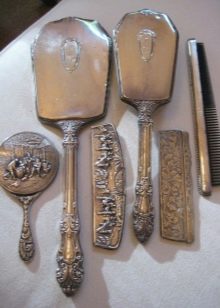

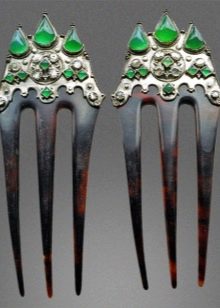
Combs with natural bristles made of horse, pork, boar, combined wool are in great demand. These materials do not damage the hair, but they are highly electrified, so it is advised to wet them a little or treat them with an antistatic agent.
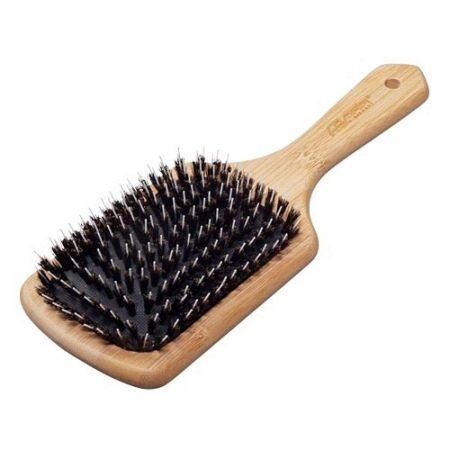
The most practical combs are the ceramic-coated carbon combs, as they do not require special care and do not get dirty. The most useful are called wooden, and traumatic - metal. However, if the teeth have small balls at the tips, then regardless of the base material, such a product will be the most gentle.
How to choose?
Combs should be divided not only by purpose, shape, size and type of bristles, but also by the type of hair for which each one is intended. A properly selected product will help you easily and without injury to cope with even the most stubborn mop. Conversely, an inappropriate comb will not only be ineffective, but can also damage the hair structure.
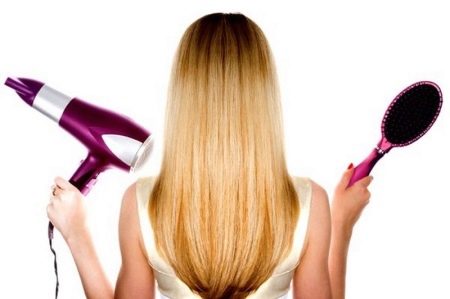
The widest massage comb is considered the most versatile, as it is suitable for hair of any thickness, length and structure.
For thin and brittle hair, as well as dry hair prone to tangling, it is recommended to use combs with natural bristles. However, they are not suitable for curly ones, since they will not only not comb, but also entangle the curls. Natural bristles are suitable for detangling medium length hair.
To add volume to short hair, use skeletal combs and brushes, and flat combs and brushes for regular brushing. When choosing a brushing, it should be remembered that the longer the hair, the larger the diameter is needed.
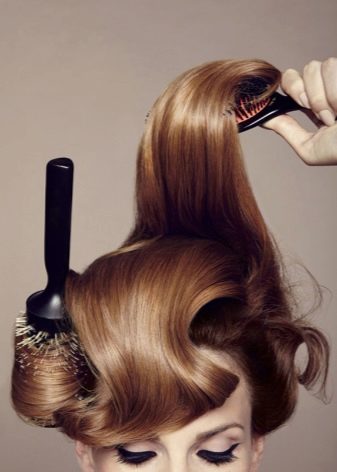
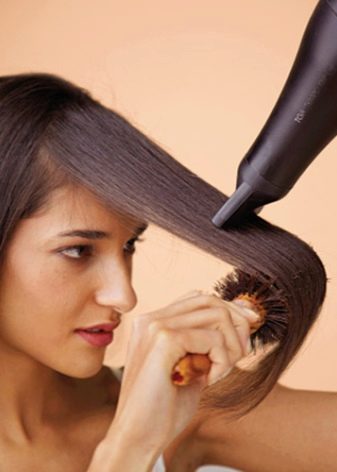
For thin hair, a high density of bristles is required, and for thick hair, on the contrary, it is sparse.
Curly hair looks impressive, like real waves, but at the same time it is very naughty and brittle. For curly, tight curls, flat combs and far-toothed brushes, such as the Tangle teezer, are best. A massage comb is suitable for soft and fluffy ones.
Also, combs with sparse teeth cope with thick, coarse hair. The dense-toothed models are soft and thin. In general, they are good for long hairstyles, just like a massage comb. For thick hair, you should look out for combined models with different frequency of teeth, combs, flat hard bombs.
It is recommended to choose your materials for a specific hair type. So, silicone and ebonite, which have an antistatic effect, are suitable for curly hair. Also silicone and carbon will give softness, shine and silkiness. Natural bristles, nylon are recommended for weakened, brittle hair. Plastic is convenient for very short hairstyles, hedgehogs, and high-quality wood for unraveling.
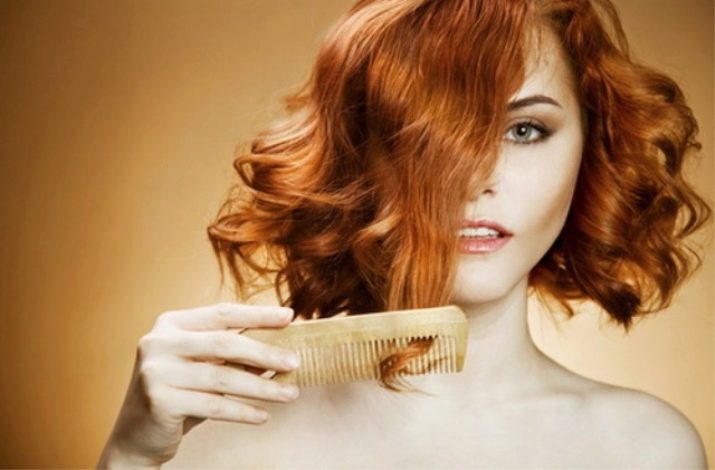
The material needs to be the harder, the thicker the hair. The most hard ones include bone, porcelain, metal, and the soft ones - rubber, plastic, silicone.
Natural materials are recommended more often than artificial ones, however, when choosing such a comb, you should take into account the characteristics of your body. An allergic reaction can occur to natural stubble, silver and other metals.
When it comes to styling, different combs are more suitable for different purposes. Round nylon combs will straighten wavy and curly hair, or a natural bristle product to simply straighten straight lines.Lush curls can be created with high volume brushing, and a small diameter will help in giving root volume.
Ponytail combs and long, thin-toothed combs can help separate strands. And to evenly apply the gel or mousse to them, it is best to use a plastic flat comb.
The following video will tell you how to choose the right hairbrush:
Important nuances
It is important not only to choose the right comb, but also to use it correctly:
- Prolonged brushing is recommended, which has a positive effect on the health of the hair and scalp. You should devote about ten minutes a day to a simple process, morning and evening. At the same time, it is not recommended to do this more often, as this will lead to rapid contamination. If the hair tends to be oily, then combing should be done carefully, without touching the scalp, so that the sebaceous glands do not start their work.
- Experts do not recommend combing raw hair so as not to damage its structure. Recently, however, there are more and more products designed specifically for drying. For example, a microfiber comb. Do not comb hair that has been treated with strong fixing agents: gels, mousses and varnish. First you need to wash and dry them, and only after that expose them to combs.
- Owners of short shoulder-length hair are usually not in danger of tangling curls, so they can comb their hair from roots to ends. To prevent tangles from forming, it is enough to cut the regrown hair in time. The main thing is not to damage the scalp with hard combs.
- Long and curly hair tends to tangle. Combing should be started from the tips to the roots, not pulling or tearing knots, but carefully unraveling with your fingers and a comb. When there are no tangled areas left, you can use a brush. After moving the comb, it is recommended to run your hand through the hair, so the sebum is evenly distributed.
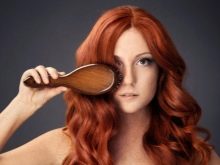

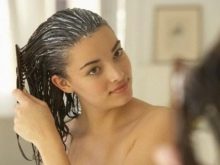
- It is important to take care of the comb so that it lasts longer and, most importantly, brings the desired effect on the hair. Sometimes people think that it is enough to simply brush the hair out of the brush sometimes, but this is not the case. To begin with, they must be removed after each brushing, for example, with a needle, toothpick or special brushes.
- Since combs deal with hair, scalp and its keratinized particles, sebum, hygiene rules should be observed. Hair also encounters dust and dirt on a daily basis, and all this remains in the bristles, creating a favorable environment for microbes. It is best to use only your own thing, not to lend it to others and not to take someone else's.
- Don't forget to wash your hairbrush at least once a week. Moreover, if the hair is oily, then it should be washed daily. If the product has natural bristles, then the procedure should be carried out with shampoo.
- If it is damaged, it is better to change the comb right away, as it can harm your hair or scalp. In general, it is recommended that you change your combs once a year.
